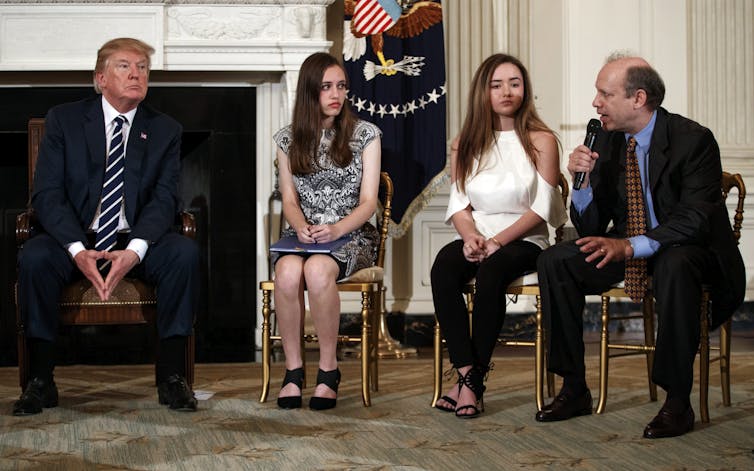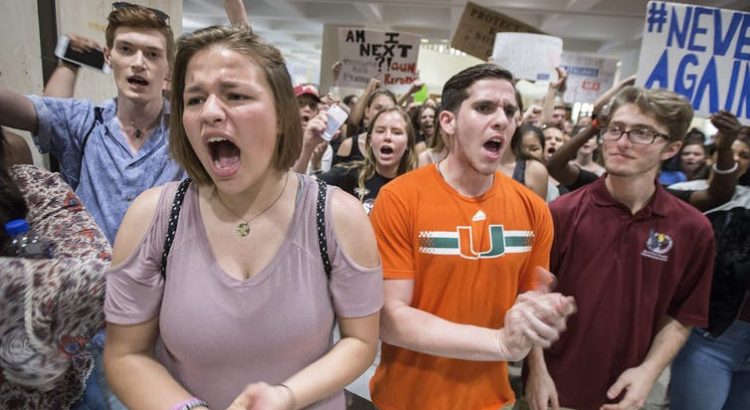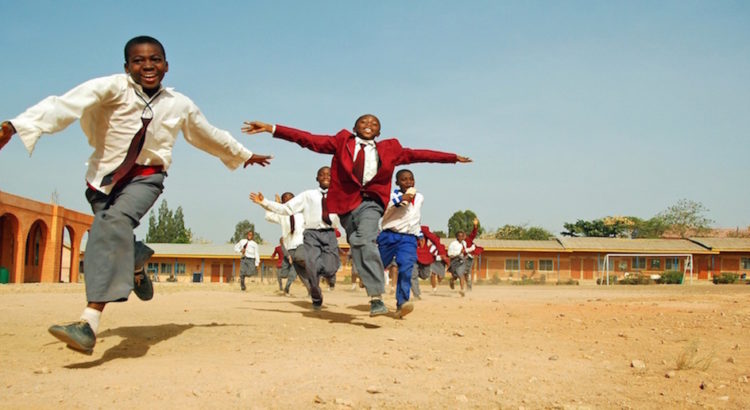By. Henry Giroux
The ongoing crisis of democracy has two markers: The erasure of memory and the politics of disposability.
In the age of Donald Trump, history neither informs the present nor haunts it with repressed memories of the past. It simply disappears.
This seems especially true regarding the current cult of violence, guns and domestic terrorism.
Such violence is not only evident in the horrors of early fascist and Nazi regimes, but also in the massacre of Vietnamese infants and children at My Lai , and in the guns turned repeatedly on children in the United States, most recently in Florida.
An estimated 188 shootings have occurred at U.S. schools and universities since 2000. There will be no escape from mass violence in the U.S. until it is placed within a broader historical, economic and political context to address the totality of forces that produce it.
Focusing merely on mass shootings or meaningless gun-control laws does not get to the root of the systemic forces that produce America’s love affair with violence and the ideologies and criminogenic institutions that produce it. Historical and social amnesia in fact facilitates America’s addiction to violence.
This is especially troubling when the “mobilizing passions” of a fascist past now emerge in a stream of hate, bigotry, lies and militarism that are endlessly circulated at the highest levels of the Trump administration and in powerful conservative media such as Fox News, Breitbart News and conservative talk radio stations.
These right-wing media stalwarts have been joined by newcomers like Clear Channel and Sinclair Broadcast Group.
And so the politics of disposability, in which the well-being of citizens, democratic ideals and the social contract are tossed away, is no longer the discourse of marginalized extremists. It’s now trumpeted daily by the conservative media machine and exists at the highest levels of government.
America is watching and listening, and so too is Trump himself. His tweets often make reference to actual fake news, and not just the stories he labels as such because they fail to fawn over him:
The politics of disposability is increasingly evident not so much in rise of mass shootings in the United States but in the fact that they are getting deadlier, especially as they involve the maiming and killing of children.
Seventeen people, most of them teens, are now dead at the hands of a 19-year-old shooter armed with an AR-15 assault rifle at Marjory Stoneman Douglas High School in Parkland, Fla. They won’t be the last to die. The question is not if, but when, in a society that has turned malignant with violence.
Violence is indeed a cancer metastasizing through American society. The proliferation and sales of guns as both an industry and form of entertainment is at the heart of such violence. The profits from weapons of war and death are now a more important investment than investing in the safety, security and lives of young people.
The logic of disposability and the war culture it legitimates was on display recently as Trump listened to the impassioned testimony of parents and children who have seen their children and friends killed in gun shootings.

He responded by advocating for teachers to be armed and trained to have concealed weapons. Instead of confronting the roots of violence in America, he followed the NRA line of addressing the epidemic of violence, mass shootings and the ongoing carnage with a call for more guns. He normalized the insane logic that mass violence can be met with more violence.
“A teacher would have shot the hell out of the gunman before he knew what happened,” Trump said at the annual CPAC conference.
Trump, who was the recipient of US$30 million in campaign funds from the NRA, channels its head, Wayne LaPierre, who calls for more armed teachers. LaPierre trades in fear-mongering, mistrust and even Cold War rhetoric, calling gun control advocates “socialists.”
Trump and LaPierre have no interest in preventing school shootings. On the contrary, they want to “prepare for shootings” by turning schools into war zones.
This logic is breathtaking in its moral depravity, its refusal to get to the root of the problem and its unwillingness even to advocate for the most minor reforms such as banning assault rifles, making illegal the sale of high-capacity ammunition magazines and expanding background checks.
There are 300 million guns in the United States and since the 2012 mass murder of 20 children and six teachers at Sandy Hook Elementary School, hundreds more children have died of gun violence.
There is no defence for putting the policies of the NRA ahead of the lives of children.
Criminal acts often pass for legislative policies. How else to explain the Florida legislature voting to refuse to even debate outlawing assault weapons while students from Marjory Stoneman Douglas High School sat in the gallery and watched this wretched and irresponsible act take place?
How else to explain that the U.S. House of Representatives, seemingly reduced to an adjunct of the NRA, voted to pass a law that would allow individuals to carry concealed weapons across state lines?
These are the people who have the blood of thousands on their hands. The power of money in politics has morphed into a form of barbarism in which financial gain and power have become more important than protecting the lives of America’s children.
Children no longer have a safe space in America, a country saturated in violence as a spectacle sport, its citizens routinely brutalized by repeated deadly acts of domestic terrorism followed by the criminal inaction of their elected representatives.
Any defence for the proliferation of guns, especially those designed for war, is, in fact, criminal. It’s political corruption, a government in the hands of the gun lobby, and a country that trades in violence at every turn in order to accrue profits at the expense of the lives of innocent children.
This is how the logic of disposability works. This is how democracies die.
Children have more moral courage
And this debate is not simply about gun violence, it is about the rule of capital and how the architects of violence accrue enough power to turn the machinery of death and destruction into profits while selling violence as a commodity.
Violence is both a source of profits and a cherished national ideal. It is also the defining feature of a toxic masculinity so perfectly personified by Trump, pussy-grabber-in-chief.
Gun reform is no substitute for real justice and the necessary abolition of a death-dealing and cruel economic and political system that is the antithesis of democracy.
What are we to make of a society in which young children have a greater sense of moral courage and social responsibility than the zombie adults who make the laws that fail to invest in and protect the lives of present and future generations?
First step: Expose their lies, make their faces public, use the new media to organize across state lines, and work like hell to vote them out of office in 2018.
Hold these ruthless walking dead responsible and then banish them to the gutter where they belong. At the same time, imagine and fight not for a reform of American society but a restructuring along the lines of a truly democratic order.
Source:
https://theconversation.com/trump-guns-and-the-warnings-of-history-92027










 Users Today : 112
Users Today : 112 Total Users : 35460129
Total Users : 35460129 Views Today : 150
Views Today : 150 Total views : 3418781
Total views : 3418781